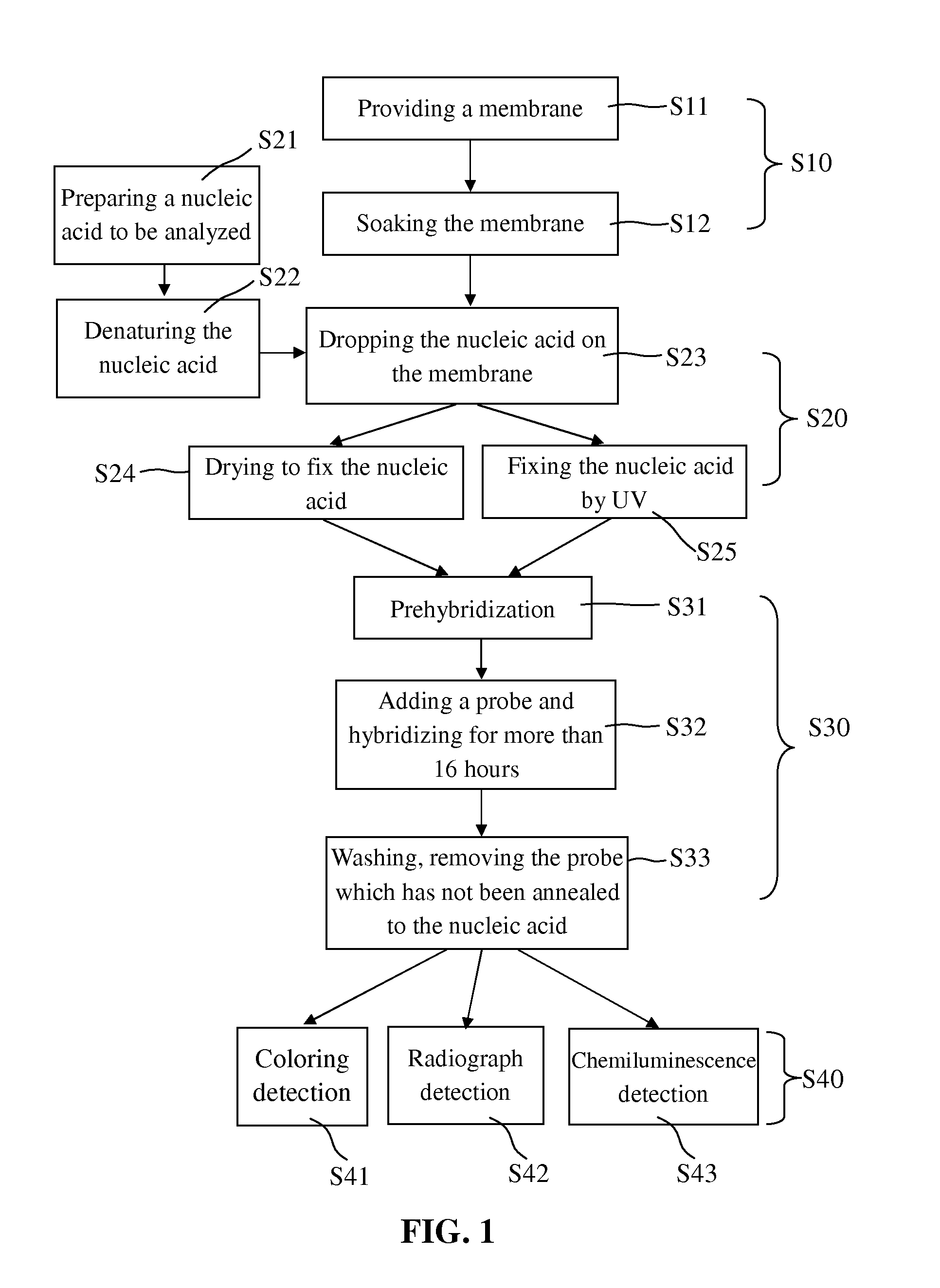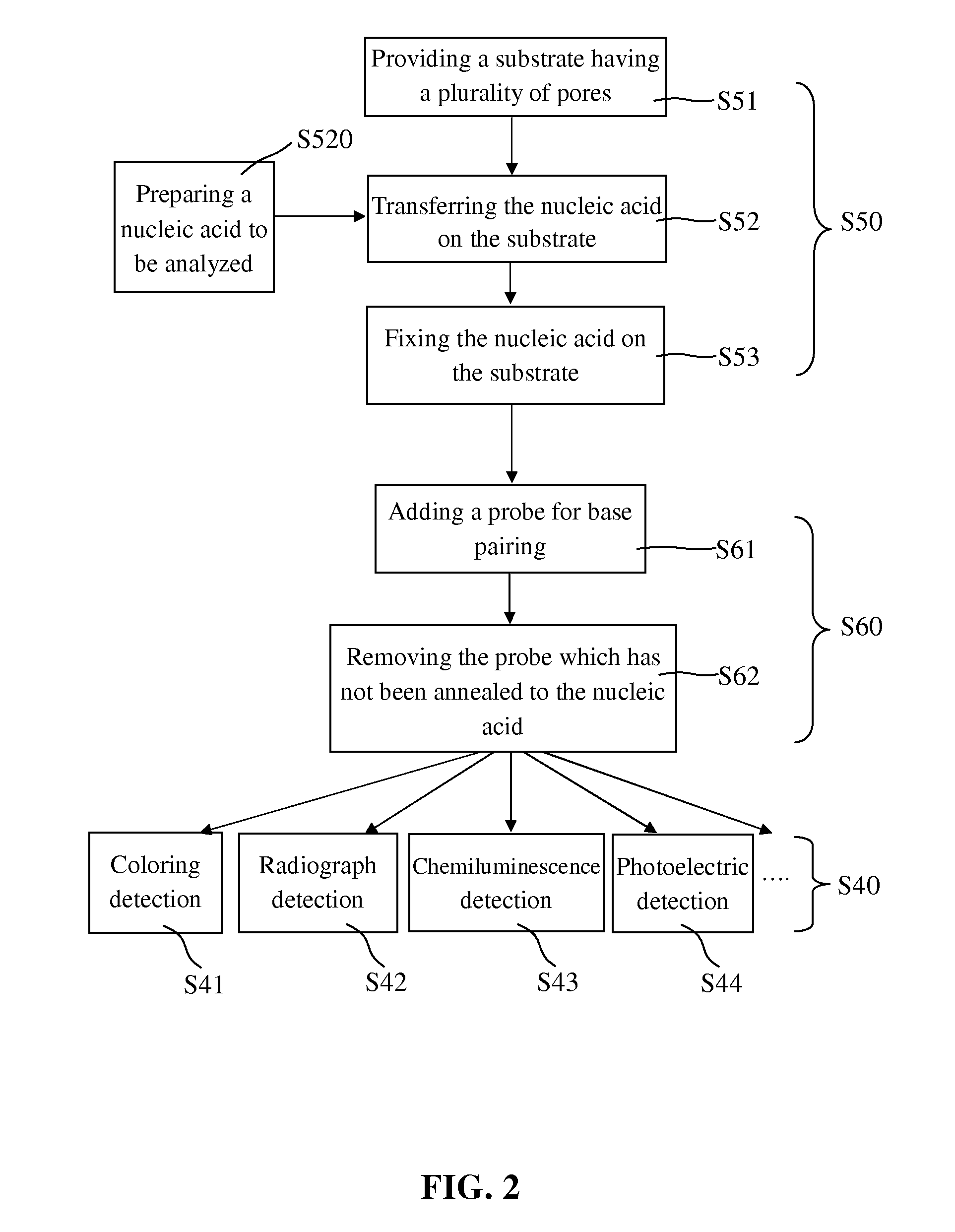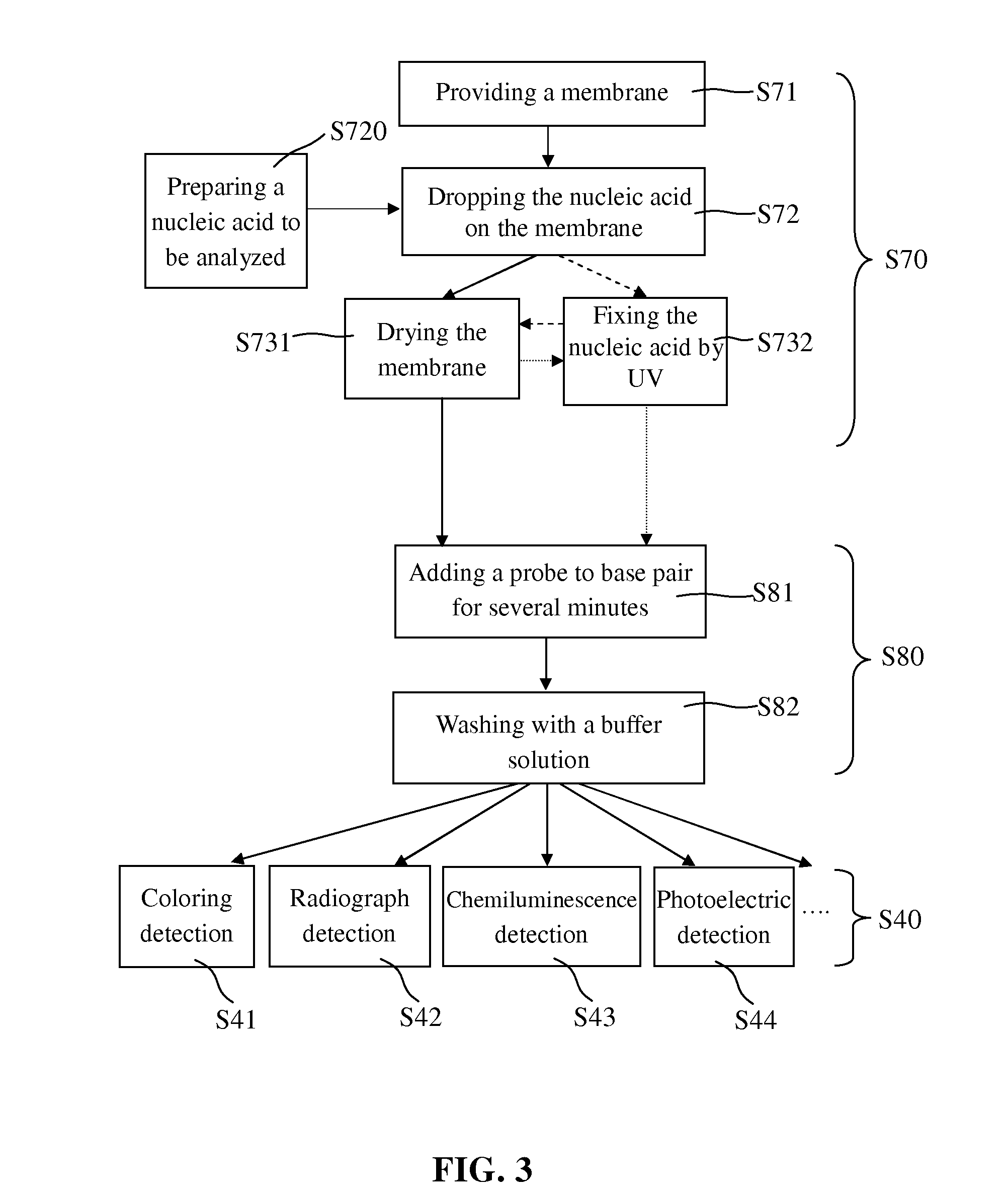Blotting method for rapidly analyzing nucleic acid
a nucleic acid and blotting technology, applied in the field of nucleic acid analysis methods, can solve the problems of inconvenient method and urgent experiment results, and achieve the effects of reducing experiment time, reducing experiment time, and shortening the time for the entire analysis
- Summary
- Abstract
- Description
- Claims
- Application Information
AI Technical Summary
Benefits of technology
Problems solved by technology
Method used
Image
Examples
example 1
The Treatment of the Nucleic Acid to be Analyzed
[0034]In the treatment of the nucleic acid to be analyzed (step S70), a membrane being able to absorb the nucleic acid to be analyzed was provided in step S71; the nucleic acid to be analyzed which was prepared in step S720 was added to the membrane in step S72; and then the nucleic acid to be analyzed was fixed on the membrane by drying in step S731 or by UV radiation in step S732. After step S732, the membrane is further subjected to the step S731 to be dried. Alternatively, the membrane was firstly radiated by UV in step S732 and then subjected to the step S731 to be dried.
[0035]The membrane provided in step S71 may be the traditional nylon membrane or nitrocellulose membrane, but is not limited thereto. The nylon membrane may have positive charge or have no charge, and absorbed more than 400 82 g / cm2 nucleic acid, while nitrocellulose membrane absorbed 75 to 110 μg / cm2 nucleic acid. The pores of the nylon membrane and nitrocellulos...
example 2
The Hybridization of the Nucleic Acid
[0040]After being absorbed on the membrane, the nucleic acid to be analyzed was then hybridized in step S80. In general, the nucleic acid to be analyzed has not been fixed on some areas of the membrane where the nucleic acid can be still absorbed, and if these areas are not blocked, the added probe which is also nucleic acid will be non-specifically bonded to these areas of the membrane. Accordingly, in the prior art, the prehybridization was indispensably done before the hybridization to lower the background noise of the hybridization signal.
[0041]However, in the present invention, the membrane absorbing the nucleic acid to be analyzed was dried, and thus when the nucleic acid probe solution was added thereto, it could be quickly attracted by the capillarity generated by the fine pores of the membrane. Then the nucleic acid probe found the complementary nucleic acid to be analyzed by Brown Movement in rather a short time, and finished the hydrog...
example 3
Analysis on the Time for Drying and Fixing the Nucleic Acid
[0049]A dry nylon membrane having pores of 0.45 μm in diameter was provided, and round pieces thereof having a diameter of 6 mm (area of about 28 mm2) were prepared by using a paper puncher. Subsequently, a solution containing the nucleic acid to be analyzed was directly dropped on the center of each nylon membrane piece (meantime deionized water was dropped on one nylon membrane piece as control), and then the nylon membrane pieces were place on a heater and dried at a temperature of 100° C. for various time to analyze the fixation difference of the nucleic acid to be analyzed in case of different fixing time.
[0050]The nylon membrane having the nucleic acid to be analyzed fixed thereon was washed in a buffer solution of low ion strength (for example, 0.1 fold SSC+0.01% (w / v) SDS) 5 times to wash off the unfixed nucleic acid to be analyzed, 10 minutes for each time. Subsequently, a solution containing the nucleic acid probe ...
PUM
| Property | Measurement | Unit |
|---|---|---|
| temperature | aaaaa | aaaaa |
| diameter | aaaaa | aaaaa |
| temperature | aaaaa | aaaaa |
Abstract
Description
Claims
Application Information
 Login to View More
Login to View More - R&D
- Intellectual Property
- Life Sciences
- Materials
- Tech Scout
- Unparalleled Data Quality
- Higher Quality Content
- 60% Fewer Hallucinations
Browse by: Latest US Patents, China's latest patents, Technical Efficacy Thesaurus, Application Domain, Technology Topic, Popular Technical Reports.
© 2025 PatSnap. All rights reserved.Legal|Privacy policy|Modern Slavery Act Transparency Statement|Sitemap|About US| Contact US: help@patsnap.com



